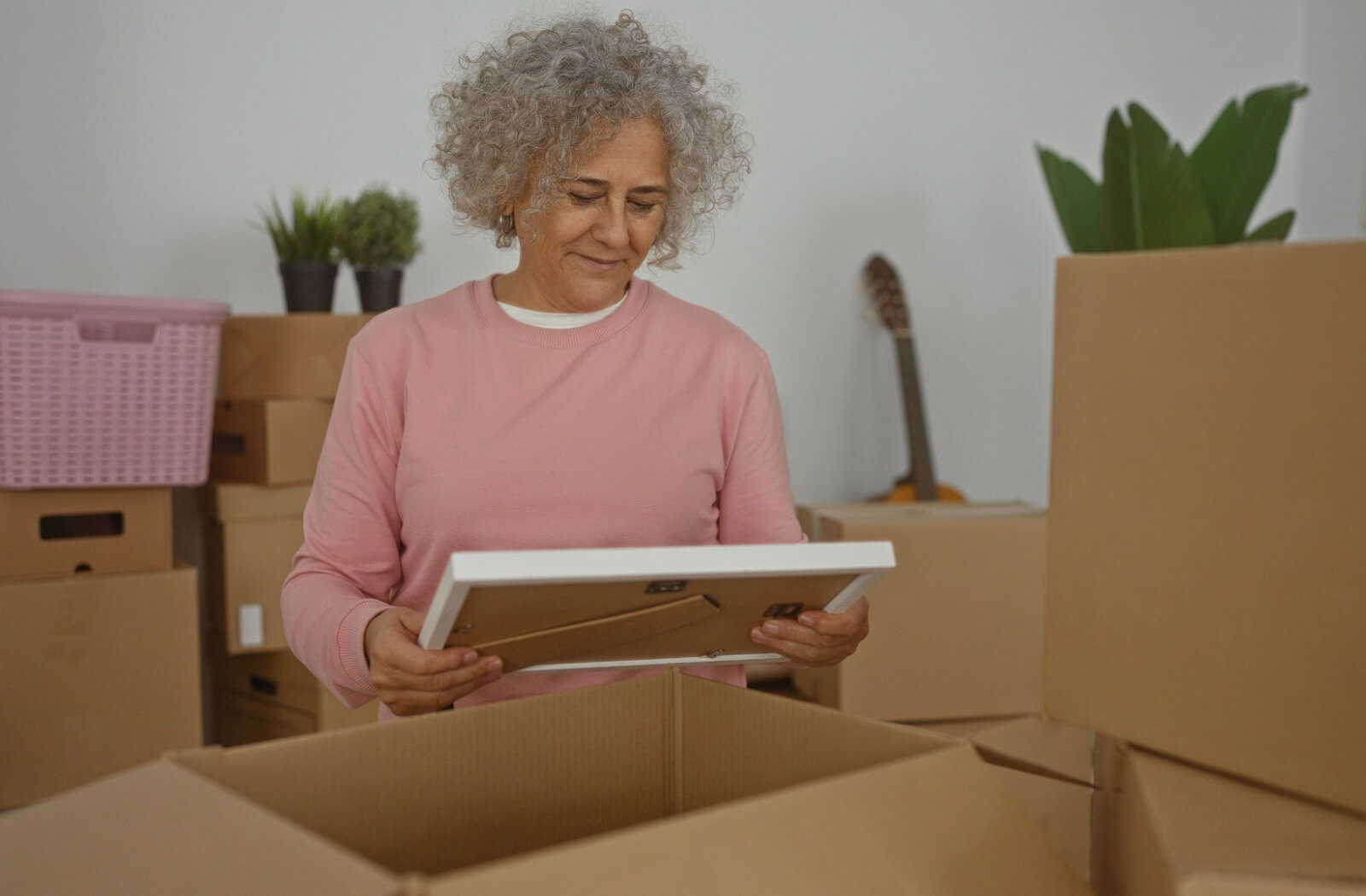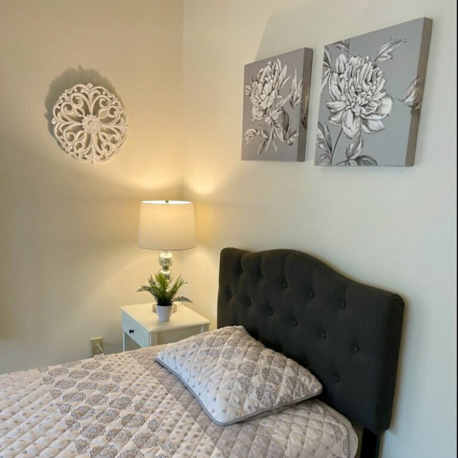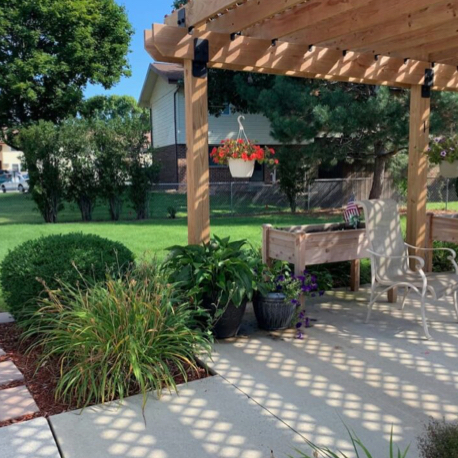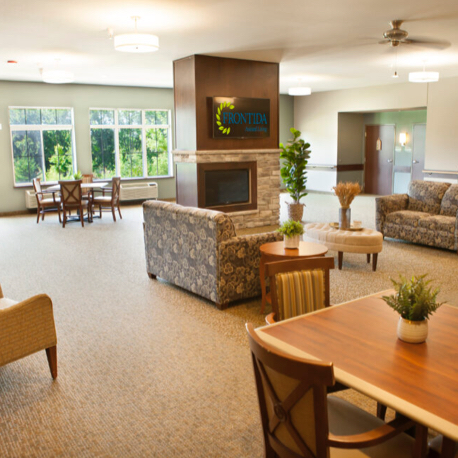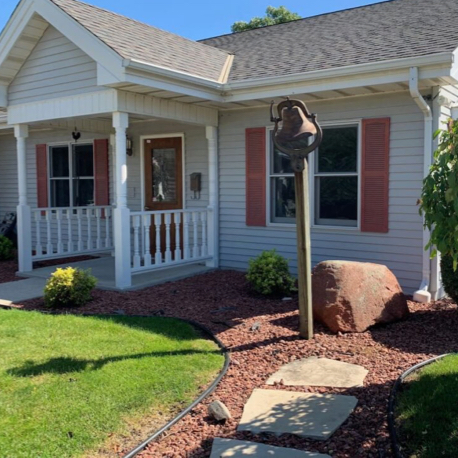Key Takeaways
- Essentials come first: Pack clothing, personal care items, medications, and important documents.
- Add comforts from home: Photos, favorite blankets, and hobbies create familiarity and joy.
- Avoid unnecessary items: Oversized furniture, valuables, and unsafe appliances are best left behind.
- Think beyond the move: Involve your loved one, label belongings, and plan for a smooth emotional transition.
Moving a loved one into a senior living community is an important transition. The essentials for a move to assisted living include clothing, medications, and personal care items. You should also consider comforts from home, such as photos, favorite items, and meaningful hobbies.
When the time comes, understanding what to pack for assisted living can make the move smoother, reduce stress, and provide comfort.
How Do You Prepare for a Move to Assisted Living?
Before families begin packing, it’s best to ask the assisted living community what furnishings or supplies are already included. Many provide basics like a bed, dresser, and nightstand. Some may also provide linens or window coverings.
Most assisted living apartments are comfortable but still smaller than a family home. Measuring the space beforehand helps families make thoughtful decisions and avoid overpacking. Downsizing also helps residents focus on the items that matter most.
What Essential Items Should You Pack for Assisted Living?
Clothing for Comfort and Practicality
Pack a mix of comfortable everyday wear along with a few dressier outfits for special events. Seasonal clothing like coats, rain gear, and warm sweaters is important in changing climates. Don’t forget sleepwear, slippers with non-slip soles, and socks.
Personal Care and Hygiene Items
Familiar toiletries can make daily routines more comfortable. Bring essentials such as a toothbrush, toothpaste, lotion, hairbrush, shaving supplies, and any personal skincare or makeup items your loved one prefers.
Health and Medical Needs
Be sure to bring any necessary mobility aids, such as glasses, hearing aids, walkers, or canes, to ensure comfort and independence.
Important Documents and Records
Keep identification, insurance cards, and medical documentation close at hand. It’s also wise to pack a list of emergency contacts and copies of advance directives or power of attorney paperwork.
What Comforts from Home Help a Loved One Adjust?
Bedding and Linens That Feel Familiar
Even if the community provides linens, many residents feel more comfortable with their own blankets, quilts, or pillows. These small touches can provide familiarity at bedtime.
Personal Photos and Décor
Family photos, framed art, or cherished keepsakes brighten the new space and make it feel more personal. If space allows, a small piece of furniture, such as a favorite chair, can provide added comfort.
Hobbies and Favorite Activities
Encourage your loved one to bring books, puzzles, knitting supplies, or other hobbies they enjoy. These familiar activities help maintain routines and foster engagement.
Technology and Entertainment Options
A television, tablet, or radio can provide entertainment and connection. Many families also set up video calling apps so residents can easily stay in touch with loved ones.
What Items Should You Avoid Bringing to Assisted Living?
Large or Oversized Furniture
Big couches, dining tables, or large shelving units usually won’t fit and can make the room feel cramped.
Valuables and Irreplaceable Belongings
Items like heirlooms, expensive jewelry, or large amounts of cash are best kept safe at home with family.
Unsafe Appliances or Electronics
Appliances with open heating elements, such as toasters, hot plates, or space heaters, are typically restricted due to safety concerns.
Excessive Clutter
Too many decorative items or collectibles can limit space and make it harder to navigate safely, especially for residents with mobility concerns.
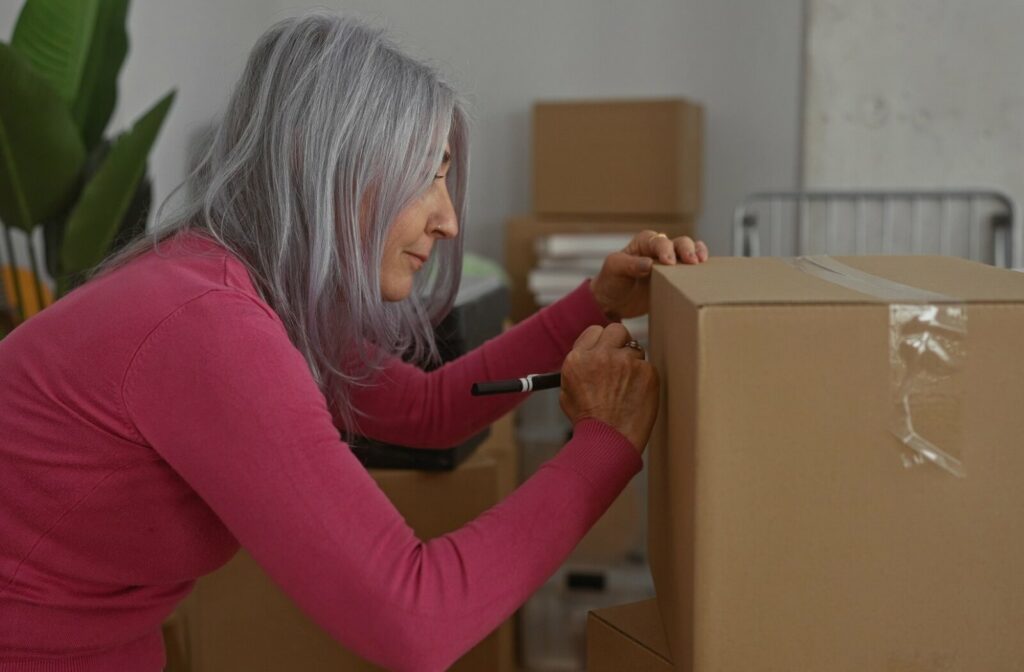
How Can Families Make the Transition to Assisted Living Smoother?
Involve Your Loved One in Packing
Allow your loved one to choose meaningful items to bring. This sense of ownership helps them feel more comfortable during the move.
Label Clothing and Personal Items
Clearly labeling belongings prevents mix-ups, especially when community laundry services are used.
Set Up the Room Before Move-In Day
If possible, arrange the space ahead of time. Place family photos, favorite blankets, or a familiar lamp so the room feels welcoming right away.
Visit Often and Stay Connected
Frequent visits during the first weeks can ease the emotional adjustment. Encourage family and friends to stay in touch, whether through in-person visits, phone calls, or video chats.
Acknowledge the Emotions of Moving
Transitions can stir feelings of sadness or uncertainty. It helps to talk openly about these emotions while also focusing on the benefits of community living, such as safety, support, and new opportunities for connection.
Why Packing Thoughtfully Matters
Packing is more than moving boxes—it’s about creating comfort and security in a new environment. Families who plan carefully, prioritize essentials, and include personal touches often see their loved ones settle in more smoothly. A well-prepared move shows thoughtfulness and care, helping residents feel truly at home.
Support from Frontida
At Frontida communities, families find not just a place to live, but a community where their loved one is welcomed, cared for, and supported. Thoughtful packing helps create a positive start, but our compassionate approach keeps that positivity going by helping residents feel at home long after move-in day.
If you’re preparing for this important step, find a community, contact us, and schedule a tour to see how our team can help guide your family through the transition with warmth and understanding.

